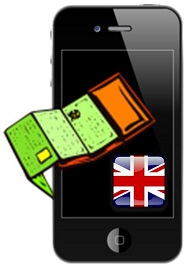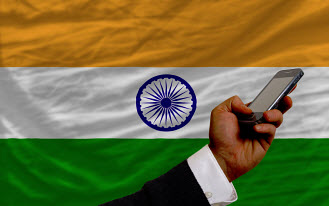Only just launched in April 2012, the service is going to be abandoned on March 31, 2014.
O2, a mobile network operator in the United Kingdom, has announced its intentions to shut down its mobile wallet service as of the end of March, this year, after only two years of operation.
The service offered a number of different features to its users through their smartphones and tablets.
Among the services available through this mobile wallet was smartphone and tablet based shopping, money transfer and offer services. Moreover, it also included a Visa contactless card and the tracking of transactions. It was originally intended to be one of the services that would be broadening to include the use of NFC technology among its supported tech.
The O2 mobile wallet was among the very first to enter into this part of the smartphone payments space.
 A statement released by the carrier said that when they started the service in 2012 they were one of the first around. However, it also added that “Since then lots has changed for us, the market and our customers. So, we’ve decided to close the O2 Wallet to give us time to look into new and better ways to help people manage their money on the move, both in the UK and abroad.”
A statement released by the carrier said that when they started the service in 2012 they were one of the first around. However, it also added that “Since then lots has changed for us, the market and our customers. So, we’ve decided to close the O2 Wallet to give us time to look into new and better ways to help people manage their money on the move, both in the UK and abroad.”
They did express that the journey itself has been exciting one for the company and it thanked those who took part in it. They also added that “it’s not over yet” and that they will be making other announcements regarding new innovations that would be occurring into the future.
They did want to make it clear that after the end of March, this year, consumers who had previously using the O2 mobile wallet service would no longer be able to do so, nor would they have access to the O2 Money Account Card. This also includes being able to send or receive the service’s Money Messages and being able to use the card or wallet for shopping. Moreover, train tickets will not be purchased through the app and cell phone top ups will also not be available.
The Reserve Bank of India has released a report that indicated that they had expected faster uptake.
According to the most recent Financial Stability Report from the Reserve Bank of India, the uptake of Indian mobile payments and banking has been promising, and yet considerably slower than had been expected over the span of the last three years.
The only banks in the country that can offer services over smartphones and tablets are those that are licensed.
According to the Central Bank in the country, in order to be able to offer Indian mobile paymentshttp://www.mobilecommercepress.com/mobile-banking-rise-australia/853413/, the institutions that wish to provide them to consumers must not only have a license from the Reserve Bank of India, but it must also be supervised by that agency. At the time of the report, there were 78 banks – including a number of them that are regional rural banks, as well as urban co-ops – that had been given the necessary permissions for offering these services.
Many are continuing to see a massive amount of potential from Indian mobile payments.
The Financial Stability Report claimed that using smartphones and tablets for banking offers people in India the greatest opportunity for financial inclusion that has ever been available. The report explained that “Helped by the rapid spread of use of mobile telephony, the growth in mobile banking has been encouraging over last three years.”
That said, it also pointed out that the growth and the overall acceptance of using these smartphone based services as a “channel for accessing banking services” has been much lower than had been anticipated.
Aside from the low awareness and adoption levels, there are also challenges in the industry regarding more rapid growth include the fact that banks aren’t capable of connecting bank account numbers with cell phone numbers, and there is a lack of compatibility between the apps and the devices that people are actually using in the country. There is also a lack of partnerships and models for sharing revenue between network operators and the banks, themselves.
Finally, Indian mobile payments have also been held back by the challenges in obtaining a USSD (Unstructured Supplementary Service Data) channel that is in operation for the purpose.
 A statement released by the carrier said that when they started the service in 2012 they were one of the first around. However, it also added that “Since then lots has changed for us, the market and our customers. So, we’ve decided to close the O2 Wallet to give us time to look into new and better ways to help people manage their money on the move, both in the UK and abroad.”
A statement released by the carrier said that when they started the service in 2012 they were one of the first around. However, it also added that “Since then lots has changed for us, the market and our customers. So, we’ve decided to close the O2 Wallet to give us time to look into new and better ways to help people manage their money on the move, both in the UK and abroad.”

